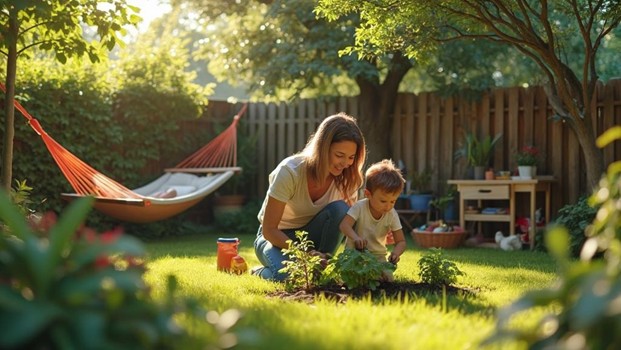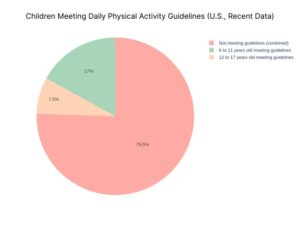What Public Spaces Say About Parenting

How do our shared community spaces reflect and shape modern parenting practices? Public spaces are powerful mirrors of societal values and priorities, particularly in how they support families and child development through thoughtful design and infrastructure.
The evolution of public spaces demonstrates a growing understanding of how environmental design impacts child development, from strategically placing rest areas for parental supervision to integrating engaging play equipment that promotes both physical and social growth.
These communal environments facilitate daily family activities and create opportunities for meaningful social connections, ultimately influencing how parents engage with their children and build stronger community bonds in an increasingly interconnected world.
Community Infrastructure Reflecting Parenting Values
Public spaces serve as vital indicators of community values, particularly in how they support child development and family engagement. Modern parks and recreational areas strongly emphasize creating safe, enriching environments where children can thrive.
Research shows that parents consider safety features and engaging activities crucial when selecting park amenities for their families.
Integrating high-quality outdoor playground equipment into public spaces has transformed how children interact and learn in communal settings. These installations promote physical activity, social skills, and cognitive development through interactive play opportunities.
Several key factors influence how parents utilize community spaces with their children:
- Strategic placement of benches and rest areas for parental supervision
- Adequate lighting throughout play areas
- Clear sightlines between different activity zones
- Regular maintenance of play structures and surfaces
The quality of neighborhood infrastructure significantly impacts family routines and choices. Parents identify inadequate sidewalks and unsafe crossings as primary reasons for preventing outdoor activities due to safety concerns.
This highlights how community planning and infrastructure development directly shape families’ engagement with public spaces, affecting everything from daily walks to social interactions.
Parental Engagement Illuminated by Public Spaces
Public spaces offer a quiet yet powerful reflection of how today’s parents engage with their communities and nurture their children’s development. In parks, schoolyards, and neighborhood gathering spots, you can see the threads of modern parenting woven into city life through presence, participation, and sometimes, subtle acts of preparation.
From making it to every parent-teacher night to chasing toddlers at the playground, thoughtful preparation plays a significant role. Even something as simple as wearing the best maternity pants—ones that truly support comfort, flexibility, and function—makes a difference.
These practical choices reflect a broader truth: when parents feel physically supported, they’re more likely to show up fully and consistently for their kids.
The way families use public spaces highlights several key aspects of modern parenting:
- Regular attendance at school events and parent-teacher meetings
- Participation in park activities and community gatherings
- Volunteering for local educational programs
- Supporting children’s extracurricular activities
The relationship between parental involvement and public spaces creates a cycle of positive reinforcement. As parents actively engage in community spaces, these areas become more welcoming and better suited to families’ needs.
This dynamic encourages other parents to participate, building stronger community bonds and enhancing the overall quality of shared spaces for everyone.
Barriers Parents Face
Recent research from 2024-2025 highlights persistent challenges parents face when supporting their children’s physical activity, closely tied to the characteristics of public spaces and community environments.
Neighborhood and Traffic Safety
Unsafe streets and fast-moving or distracted drivers cause many parents to restrict outdoor play, limiting children’s opportunities for physical activity.
Cost and Access
High fees for programs, sports, and necessary equipment make participation difficult for many families, especially those with lower incomes.
Facility Availability and Quality
Many neighborhoods lack sufficient indoor or outdoor facilities nearby, and existing spaces often suffer from poor maintenance or are not designed with children’s needs in mind.
Time Constraints
Parents’ work schedules and the complexity of coordinating activities for multiple children reduce the time available for physical activity.
Lack of Social Support and Program Information
Limited access to affordable, flexible programs and poor information sharing frustrate parents’ efforts to engage their children actively.
This research underscores how public spaces provide physical places for activity and send powerful messages about the community’s commitment to supporting families and children’s well-being. The extent to which neighborhoods are safe, accessible, and welcoming influences parental decisions and, ultimately, children’s health and social development.

The pie chart illustrates the proportion of U.S. children aged 6 to 17 who meet the recommended 60 minutes of daily physical activity.
It highlights that only a minority of children achieve this guideline, with 26% to 42% of younger children (6 to 11 years old) meeting the target, while just 15% of older children and teens (12 to 17 years old) reach this level.
Only about 20% to 28% of children in this age range meet these physical activity recommendations. The most significant portion of the chart shows children who do not meet the guidelines, underscoring a widespread shortfall in daily activity among youth.
This age-related decline in physical activity is a concerning trend, emphasizing the need for targeted efforts to promote active lifestyles, particularly among adolescents.
By addressing these barriers through thoughtful design, equitable resource distribution, and better program coordination, communities can transform public spaces into true partners in parenting.
Inclusivity and Social Development Through Shared Environments
Public spaces are vital for fostering social connections and inclusive interactions among children. These shared environments create natural opportunities for kids from diverse backgrounds to mingle, play, and learn together.
Well-designed community spaces incorporate features that make them welcoming and accessible to families of all abilities, promoting meaningful social development beyond what’s possible in isolated settings.
The impact of inclusive public spaces extends far beyond simple recreation. Here’s how shared environments shape children’s social growth:
- Natural opportunities for cross-cultural friendships and understanding
- Development of crucial empathy and communication skills
- Learning to navigate social situations with peers of different abilities
- Building confidence through varied social interactions
- Creating lasting community bonds across family groups
Parents who regularly use these spaces notice their children developing stronger social intelligence. Children naturally learn to appreciate diversity when encountering peers from different backgrounds in parks, playgrounds, and community centers.
These organic interactions help shape more empathetic, socially aware individuals who understand the value of community inclusion. The ripple effects of these early social experiences often influence children’s perspectives and behaviors well into adulthood.
Inclusive public spaces are intentionally designed community areas that prioritize universal access and foster interaction among individuals of different socioeconomic, cultural, and physical backgrounds. They enable children to develop socially in diverse and supportive settings.
Private Outdoor Spaces and Individual Growth
Private outdoor spaces play a vital role in shaping children’s development beyond the structured environments of public areas. Natural settings, like backyards and community gardens, create unique opportunities for children to explore and learn at their own pace.
These spaces serve as personal sanctuaries where kids can engage in spontaneous play without the constraints often found in public playgrounds.
The value of private outdoor areas extends far beyond simple recreation. These personal spaces offer several key benefits for child development:
- Freedom for unstructured exploration and risk-taking
- Development of independence through self-directed activities
- Enhanced creativity through interaction with natural elements
- Improved mental health from regular exposure to nature
- Stronger family bonds through shared outdoor experiences
Parents who integrate these private spaces into their children’s daily routines notice significant positive changes in behavior and well-being. The safe boundaries of personal outdoor areas allow children to test their limits while developing crucial life skills.
Children can practice decision-making and problem-solving in these familiar settings, building confidence in other aspects of their lives. These private natural spaces complement public areas by providing consistent access to outdoor experiences regardless of community facility availability.
Consider incorporating sensory-friendly elements like water tables or soft grass patches in your private outdoor space to support calmer, more grounded play experiences for children sensitive to overstimulation.
Key Community Insights
Public spaces serve as mirrors reflecting our societal commitment to nurturing the next generation, with infrastructure choices directly impacting how families interact and grow within their communities.
The evolution of these shared environments, from safety features to inclusive design elements, demonstrates our collective understanding of public spaces’ vital role in child development and family engagement.
From fostering social connections to providing safe havens for exploration, well-designed community spaces empower parents to actively participate in their children’s growth while building stronger neighborhood bonds.



